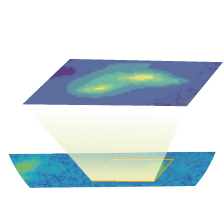High-precision AAV property prediction and generalization capabilities, covering 10+ serotypes
User-friendly one-click AAV library design for simultaneous optimization of multiple propertiesing leads!
Tailored model fine-tuning with user data to further enhance prediction accuracy
AAV Viability Data
Tissue-Specific Libraries
Protein Data
Based on BioMap's
100B-Parameter Multimodal LLM

Multi-Objective Optimization Sequence Design Algorithms
Trained on 20 million AAV viability data, achieving SOTA prediction levels, and demonstrating
generalization to
non-training-dataset serotypes and mutation regions.
Pre-trained on 10+ different tissue-specific libraries, ensuring efficient targeting and transduction capabilities across various tissues, improving the success rate of subsequent sequence validation.
Trained on extensive general protein data, effectively avoiding the generation of highly immunogenic fragments.
Porton Advanced has extensive experience in constructing AAV capsid library plasmids with established AAV packaging systems, and various purification processes to ensure stable and efficient project delivery.
We conduct AAV capsid library screening, both in vivo (NHP, mouse) and in vitro (3D culture, organoid, solid-phase screening) as necessary
We use reporter genes or specific genes with barcode sequences for virus packaging.
We perform gene synthesis based on the candidate variant sequence and construct variant plasmids.
Identify candidate variants after multiple rounds of screening.
Additionally, we conduct animal studies or in vitro affinity testing, followed by NGS sequencing to analyze the variant targeting ability, etc.
SUZHOU, China, Nov. 8, 2023 /PRNewswire/ -- On November 8, 2023, Porton Advanced announced the establishment of a strategic partnership with BioMap.

